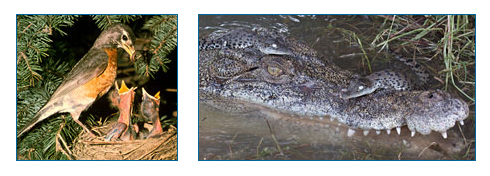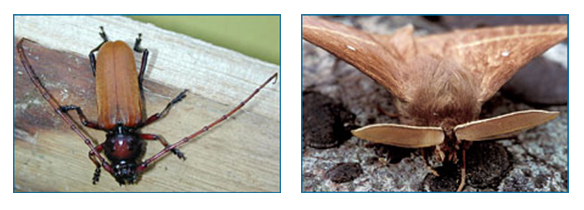We tend to think of homologies in terms of anatomy: the tetrapod limb, insect wings, vertebrate eyes. However, anatomical homologies are just one of many sorts of homologies. Any heritable trait — anything that can be directly or indirectly encoded in DNA — can be a homology:
- A simple trait
Among milkweed species, having milky sap is a homology. - A complex structure
The antennae of beetles and moths are homologous, for example.
- A gene sequence
The gene that codes for the protein insulin is homologous in humans and cows; both sequences descended from the same ancestral gene sequence. - A behavior
Birds and crocodiles both provide parental care to their offspring (as shown below); this behavior was inherited from a common ancestor and is homologous.


